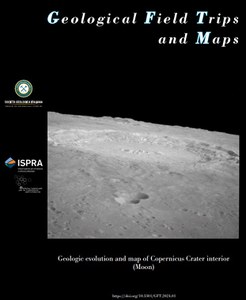Geologic evolution and map of Copernicus Crater interior (Moon)
Copernicus is a well-known, almost perfectly circular, complex impact crater with pronounced ejecta rays covering a large part of the lunar near side and for this reason, is used as the stratigraphic base of the Copernican period. Besides its importance to lunar chronostratigraphy, the mineralogical composition of its interior, characterised by an olivine-bearing central peak and compositionally varied floor and inner walls, make this crater particularly interesting for unravelling the nature of both the primordial and deep lunar crust. In addition, the identification of different crater floor materials and features including impact melts, impact breccias, mega-blocks and potential degassing vents within Copernicus are of paramount importance for understanding impact processes and related products. Hence, to foster a future in-situ exploration we have produced a high-resolution geologic map (scale 1:150.000) of the Copernicus crater interior taking into account both geomorphological and spectral information. The morphological analysis was derived mainly from Lunar Reconnaissance Orbiter Camera (LROC), Lunar Orbiter Laser Altimeter (LOLA) and Kaguya Terrain Camera data, whereas the spectral information was retrieved from Clementine data and Kaguya Multiband Imager (MI) spectral maps. Our geological map suggests an oblique impact from the SE with the production of impact melts ejected towards the NW and flowing down on the crater floor covered by impact breccias during the modification stage. The heterogeneous composition of the floor, inner walls and central peaks suggests a variegated shallow and deep lunar crust at the Copernicus impact site.
DOI: https://doi.org/10.3301/GFT.2024.01

